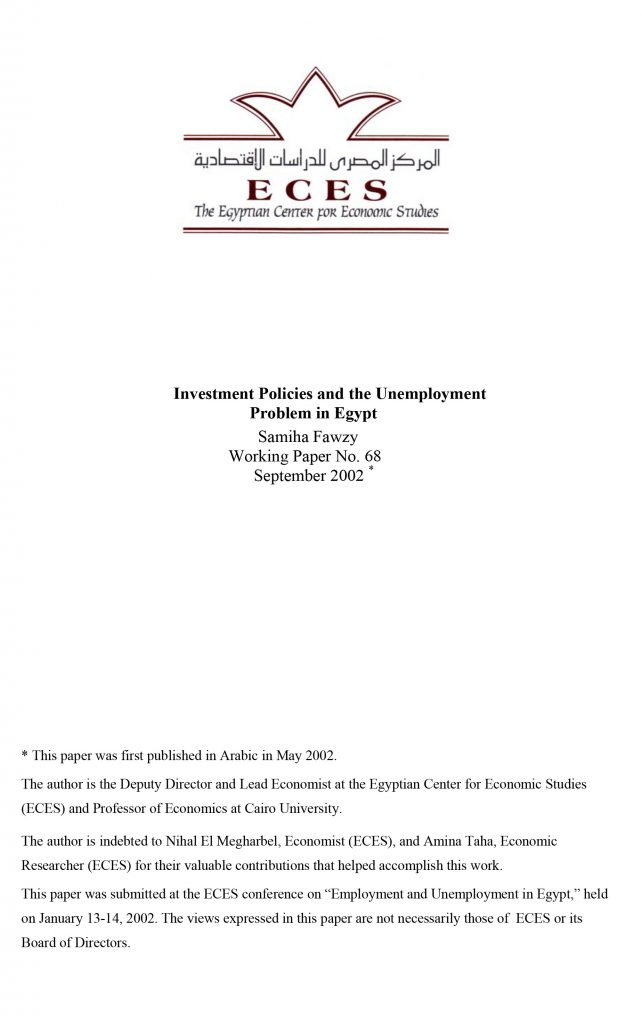Abstract:
Since the early 1990s, Egypt has experienced rapid and substantial aggravation of the unemployment problem. And despite consensus about the adverse economic, social and political implications of this problem, the present study starts from the premise that the real danger of unemployment lies in the fact that it reflects low and inefficient levels of investment and growth. Accordingly, this paper attempts to analyze the relation between the levels and patterns of investment and unemployment in Egypt.
The ultimate objective is to reach a set of policies that could enhance the levels and efficiency of investments to achieve labor-intensive growth.
The analysis shows that the increase in the level of unemployment has been primarily due to the inability of economic policies in general and investment policies in particular to achieve high and labor-intensive growth rates. These policies led to modest investment levels, which weakened the economy’s ability to create jobs, and resulted in investment patterns biased against labor-intensive growth.
The paper concludes that a diligent approach to handling this problem requires a review of development and investment policies. In this respect, it offers two sets of suggestions. The first deals with the investment policies needed to achieve high and sustainable rates of investment and growth. These policies include macroeconomic measures and policies to improve the investment climate. The second set of suggestions deals with investment incentives and the relative price structure to achieve labor-intensive growth.

Investment Policies and the Unemployment Problem in Egypt
13-05-2002
Author(s): Samiha Fawzy
Publication Number: ECES-WP68-E
